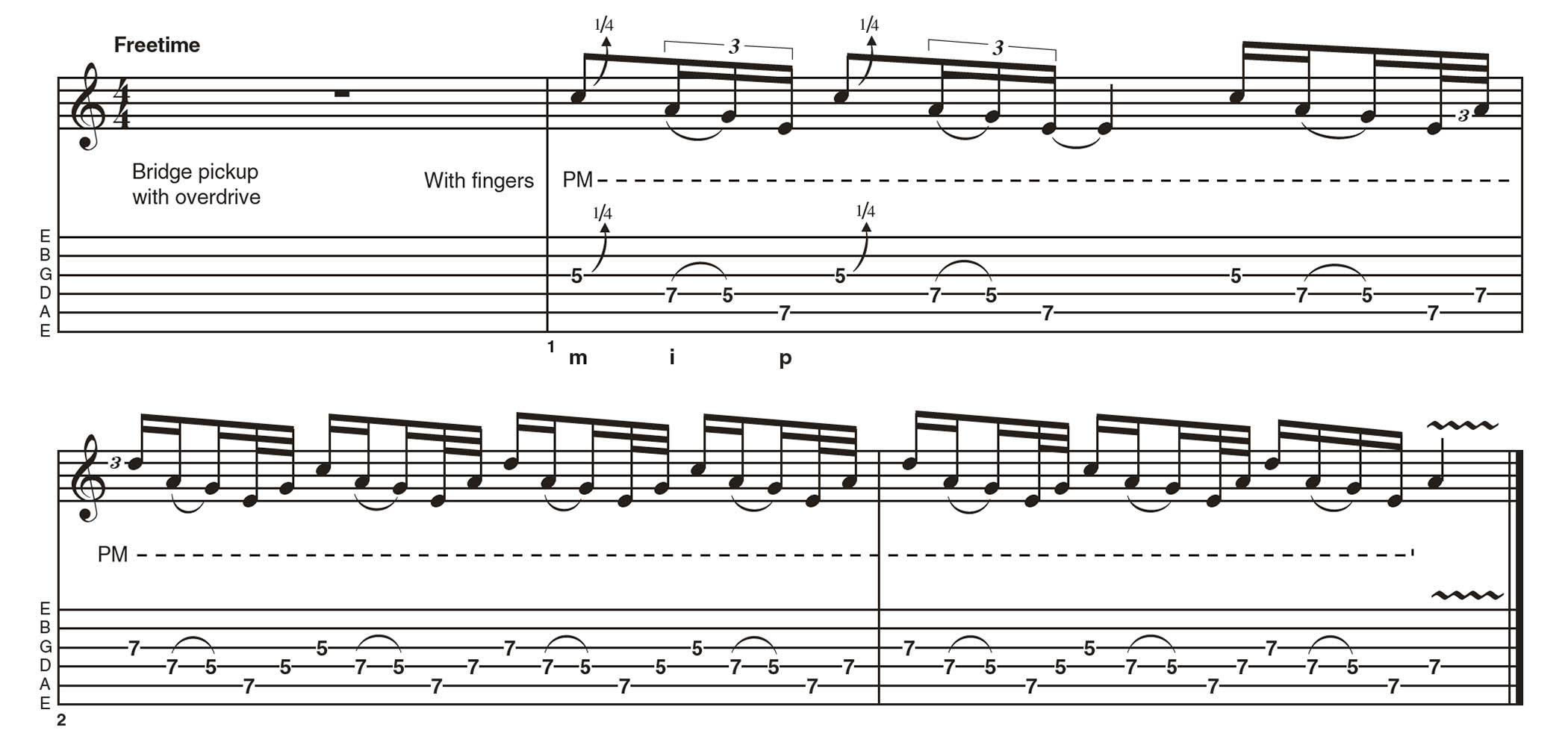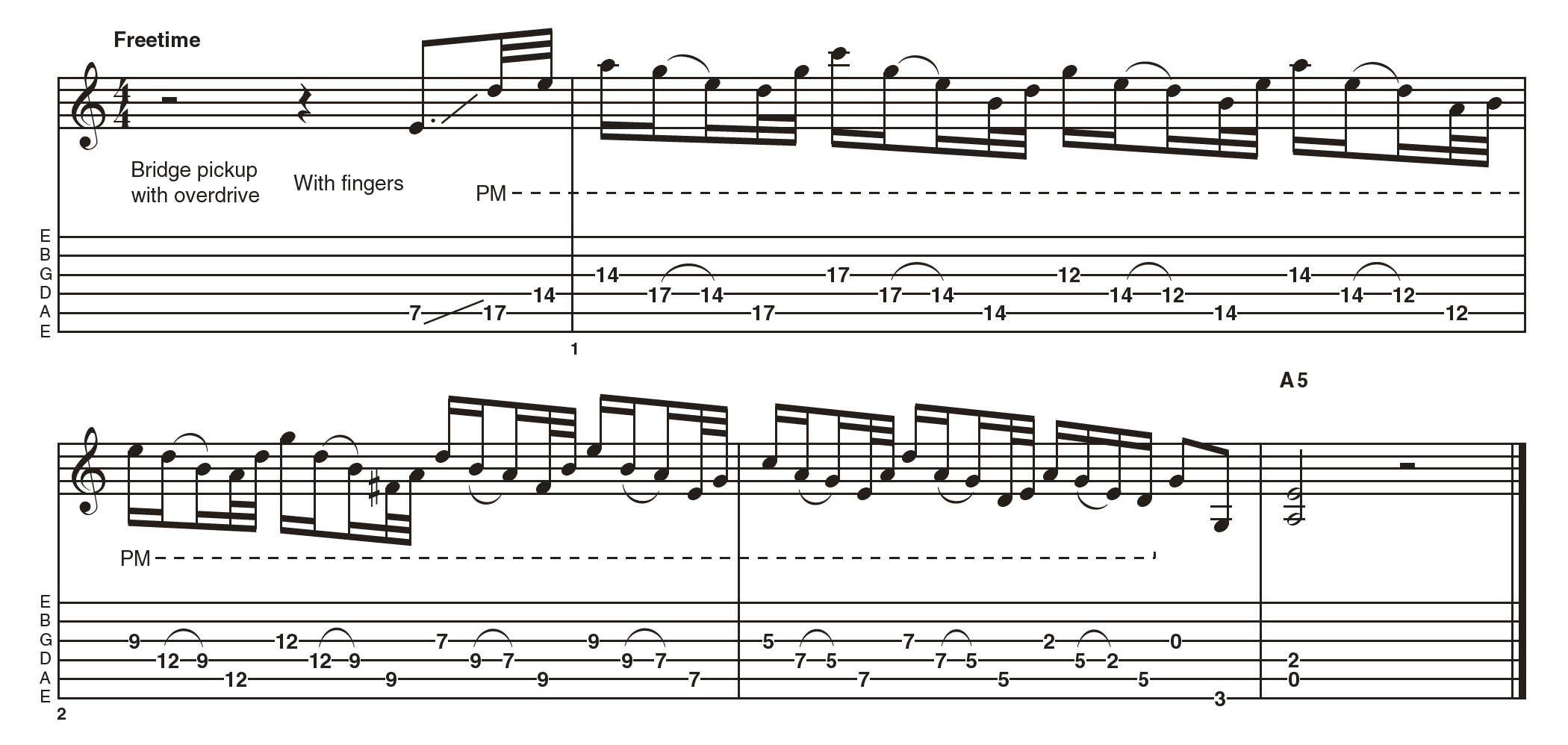Jared James Nichols is the wild man of modern blues-rock – let your solos loose with 6 of his most ferocious licks
In this exclusive lesson, the Epiphone signature artist teaches you 6 licks that will take your blues-rock solos into uncharted territory

One of today's preeminent blues-rock guitarists, Jared James Nichols has toured with many top bands including Blue Öyster Cult and Zakk Wylde, and he also fronts his own power trio. In addition he has his own signature Epiphone Les Paul with a single P-90 pickup.
In the video, Jared demonstrates all of the licks in free time so no backing track or click is used. To keep things simple, we have used a 4/4 time signature with all the rhythms being approximate to what is implied.
The licks are mostly based around A minor pentatonic (A-C-D-E-G) with some colour tones here and there. As the licks are performed with no backing there is no specific harmonic context so for simplicity we have used the A minor key signature. Of course, in the world of blues-rock these licks will work over the A7 chord family as well.
Jared demonstrates several common rock guitar techniques including string bending, harmonics, palm muting and fast pull-offs. The phrases are all tasteful and well chosen and come from a simple, well-tested framework of fingerings.
Jared also branches out into more advanced sounds with the use of some fast fingerstyle repeating licks. In fact, all of the licks are played with the fingers and if you are new to this concept do give it a go. There are many notable rock guitarists who have played pretty much exclusively with the fingers including Jeff Beck and Mark Knopfler.
The fingers provide a ‘fleshy’ tone that’s thick and warm, and offer extra facility when plying licks that involve string skipping.
The notation contains all of the articulations and phrasing from the video performance. It’d be well worth taking a close look at the way Jared picks the phrases. Hopefully there will be a new technique, lick or phrase in here for you to perfect. If you find one of Jared’s that you like, I’m sure he won’t mind you learning and using it in your own solos.
All the latest guitar news, interviews, lessons, reviews, deals and more, direct to your inbox!
Get the tone
Amp Settings: Gain 7, Bass 7, Middle 7, Treble 6, Reverb 4
Jared used his 1953 Les Paul Goldtop named ‘Old Glory’. He used the bridge pickup and set the guitar’s controls to taste. Any electric guitar will work well, but go for a dynamic overdrive tone and be prepared to experiment with your own guitar’s controls. Jared uses his fingers to pick the strings, but go for a guitar pick if you prefer, then simply add medium reverb or delay.
Example 1. Bends galore!
This first lick features an unusual use of string bending. The third string is bent up from the 5th fret and then fretted notes are added on the 6th and 7th frets respectively. As the string is already bent up these fretted notes will sound a semitone higher than fretted.
Example 2. Bend and slide lick
This second lick features conventional string bends combined with finger slides. The finger slides sound great and add fluidity to the sound. Sliding in and out of the ‘blue’ note (b5 interval, here it is Eb) sounds great and is a tried and tested blues guitar trick.
Example 3. Harmonics and bend
Here, Jared introduces natural harmonics, which he combines with a fretted note. If the harmonics are left to ring while the fretted note is added, an interesting and ear-grabbing effect is created. It may take a bit of practice to get this one just right.
Example 4. Emotive bend
This one is a quintessential blues lick and features a double string bend. First the second string is bent up from the 15th to 17th fret. Then an extra semitone bend is added and then released. Getting the intonation of all the notes just right here may also take a bit of practice.
Example 5. Crazy Hendrix lick
This lick uses the classic Hendrix style clashing bend idea to great effect. The basic technique here is to use the motion of the second string bend to pre-bend the third string. Once the third string is pre-bent it can be sounded and the two pitches will clash, providing that iconic result that Gary Moore also used to love.
Example 6a. Percussive pentatonics
This final idea across two examples is a great workout for your fingerstyle picking and pull-off technique. The palm mute provides the rhythmic definition and you may need to experiment to get the right amount of muting – too much and you deaden the string, not enough and it rings too much.
Example 6b. Percussive pentatonics v2
This idea builds on the lick that you learned in 6a. This basic pattern of fingerstyle picking and pull-offs can be adapted to fit various fingerings of the A minor pentatonic scale. Played like this, it provides us with a long, descending line.
Jon Bishop is a UK-based guitarist and freelance musician, and a longtime contributor to Guitar Techniques and Total Guitar. He's a graduate of the Academy of Contemporary Music in Guildford and is touring and recording guitarist for British rock 'n' roll royalty Shakin’ Stevens.








